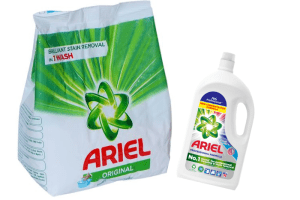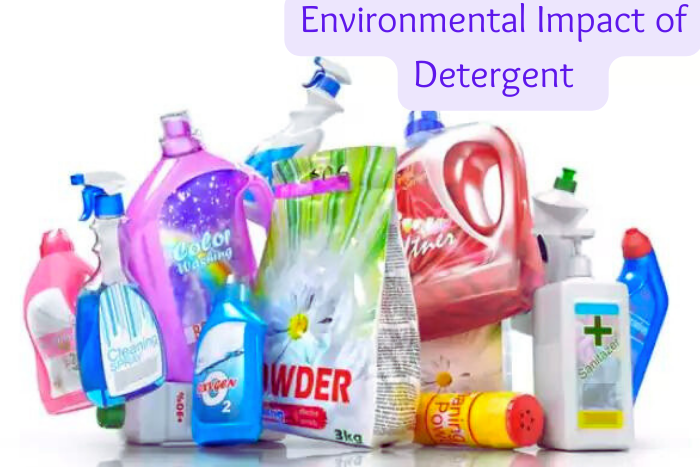We will be looking at the life cycle of detergent and its environmental impact in this article.
We can agree that detergents have become a huge part of our laundry and other forms of cleaning successes, but have we ever thought of its effect on our environments?
As a society, it is more likely that we have a growing awareness of the harmful additives in our food and products in our home.
Also, we may pay closer attention to skin care products, bathroom and kitchen chemicals but not so much on detergents right?
According to Scheibel 2004, detergents are used in numerous industrial processes, and represents the most important cleaning product with a worldwide investment of roughly $60 billion per year.
Detergents are important compounds in numerous industrial processes and has a wide application.
While, some researchers believe that detergents are continuously developed to meet higher quality and environmental standards.
Some like Arthur 2021 However, argues that – little has been amended in terms of toxicity compared to traditional washing compounds and the negative environmental impacts of detergents remain significant.
Following this trend, we intend to shed more light on the life cycle analysis of detergent and some industrial washing systems.
Detergent production shows wide impact distribution related to the various detergent sources, with a large influence on the ecosystem compared to the other impact categories.
Also Read: The Effect of Chlorofluorocarbons on Our Environment
Life Cycle Assessment of Laundry Detergent
Name of Detergent: Ariel
Available in Liquid, Powder, Gel and Pod
Recommendations for Clothes and other forms of laundry
Usage
Functional Unit: 1000 wash cycles
For medium stains, 35ml in soft water and 55 in hardwater.

Scope:
- Nigeria
- Assumption: correct amount of detergent per load.
- Raw materials, manufacturing, packaging, use, disposal, transport.
Goal: To provide powerful cleaning power at lower temperatures.
Raw Materials
- Sodium Sulfate.
- Sodium C10-16 Alkylbenzenesulfonate.
- Sodium Carbonate.
- Sodium Silicate.
- Water.
- Bentonite.
- Sodium Polyacrylate.
- Zeolite etc
– All of which occur in ballanced highly refined proportions to be suitable for both hand washing and machine washing of most consumers.
Environmental Impact: Water use
Renewable materials used everyday
Ariel claims to be ecofriendly, good example of this is the use of cellulosic ethanol in Ariel detergent. This material is produced at DuPont’s new biorefinery in Nevada, producing 30 million gallons of cellulosic ethanol a year with zero net carbon emissions.
These sustainability innovations are claimed to be made with an aim on performance. Ensuring that consumers get the best clean, yet, use less of the product.
Environmental Impact of Detergents
Laundry detergent leaves a twofold impact on the environment. These include: Chemical effects and Effects related to its plastic packaging.
Chemical Effects
Laundry detergent contains a huge number of chemicals that can be harmful to and cause a serious impact on our environment.
Some of the most common and hazardous ones are: Phosphates – This compound is found to propound cardiovascular (heart) disease and osteoporosis.
They contain toxins which are fatal to the marine environment when dispersed in wastewater wash.
Bleach – is another dangerous chemical compound in detergent used to brighten whites, its toxic fumes cause respiratory distress and in contact with skin and eyes it may cause caustic burns.
Other Environmental impacts of detergents include:
Aquatic life
The presence of phosphates in laundry detergent run-off leads to algal blooms which starve aquatic life of oxygen.
This same chemical that poses a problem for human health also affect marine life. This means that detergents impair the function of the necessary ecosystems that we rely on for livestock and more.
Pollution
Synthetic surfactants in laundry detergent reduces the tension of the water’s surface, causing it to be susceptible to pollutants such as car exhaust and pesticides.
This further impacts the aquatic environments and makes the ability to thrive and flourish more difficult.
Calculations of the primary energy demand and the global warming potential reveal the fundamental role of the application of renewable resources in the detergent production phase.
Wastewater from a laundry cycle contain both organic and inorganic contaminants, as well as mineral oil in several proportions. These substances contribute significantly, to environmental pollution.
Conclusion
With the above insight on the negative impact detergents pose on our environment.
It calls for further awareness and stringent measures by industries to opt for less toxic chemicals compoynds during production
